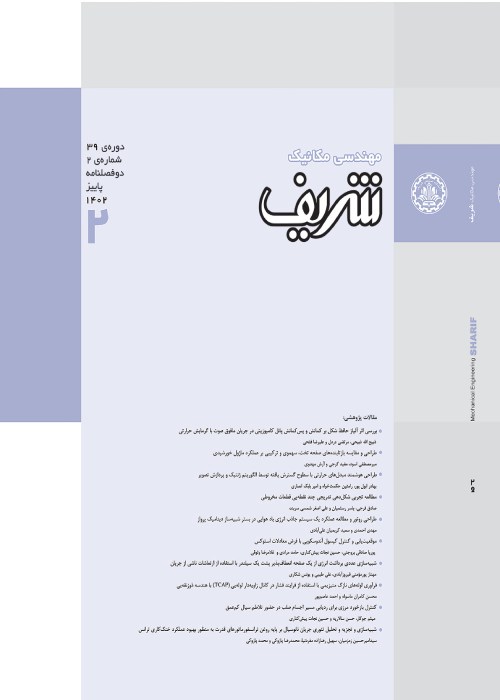EXPERIMENTAL STUDY OF THE EFFECT OF OBSTACLE ROTATING INSIDE HEAT EXCHANGER TUBE ON HEAT TRANSFER AND FLOW HARACTERISTICS
Improving heat transfer in heat exchangers by utilizing different obstacles is of great interest. Moreover, the geometry presented in almost all studies so far has been based on fixed obstacles. Therefore, the current study experimentally evaluates the effects of disk rotation (rotating speeds of 50 to 200 RPM) at different angle ratios and different pitch ratios (1 and 2) on the thermal performance coefficient of the pipe in the air-water heat exchanger with the Reynolds number ranging from 9000 to 26000, and the results are compared and reported. Placing obstacles in the path of the flow is one of the most common techniques for increasing passive heat transfer due to its advantages including easy manufacturing and low maintenance costs. On the other hand, excitation at the boundary layer affects the flow around it as well as the velocity distribution, momentum, and energy transfer. The geometry and location of the obstacle and how it plays an important role in the performance of the system. Various methods for increasing heat transfer in heat exchangers used in the industry as well as its processes to increase efficiency have been studied over the past years due to the importance of optimizing energy consumption and reducing damaging environmental impacts. The results of the current study can also be applied to the oil and gas industry. For instance, the thermal performance of city gas station heaters can be improved by using obstacles in the heating pipes. According to the results obtained in the study, the maximum increase in heat transfer for the obstacle was obtained at a pitch ratio of 2 and an angle ratio of 0.125. Compared to the smooth pipe, this procedure increased the Nusselt number, the friction coefficient, and the thermal performance coefficient by 300%, 69.38%, and 131%, respectively. Compared to the stationary obstacle, the highest thermal performance coefficient for the rotating obstacle was 1.62 times higher at PR = 3 and AR = 0.125 at a rotational speed of 200 RPM.
- حق عضویت دریافتی صرف حمایت از نشریات عضو و نگهداری، تکمیل و توسعه مگیران میشود.
- پرداخت حق اشتراک و دانلود مقالات اجازه بازنشر آن در سایر رسانههای چاپی و دیجیتال را به کاربر نمیدهد.


